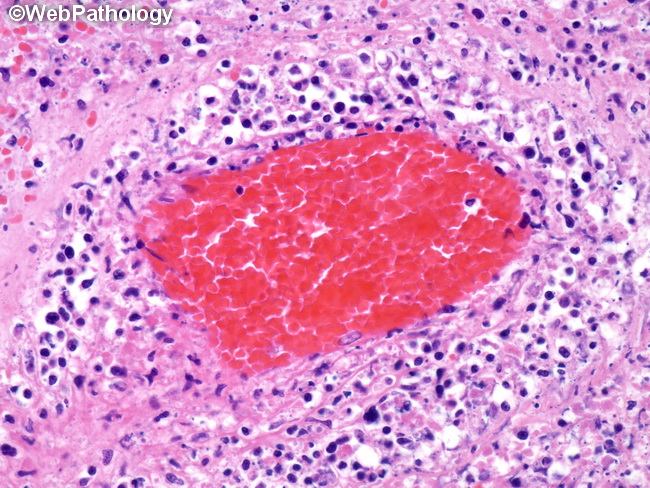Lymphomatoid Granulomatosis : Grading


Comments:
Lymphomatoid granulomatosis is graded (grades 1-3) based on the proportion of EBV-positive B-cells relative to the background reactive cells. Grade 1: The lesions have a polymorphous infiltrate in which EBV-positive large atypical cells are absent or rare (fewer than 5 cells/HPF by in-situ hybridization). There is no lymphocytic nuclear atypia and blasts are inconspicuous. Necrosis is absent or focal (one-third of cases). Grade 2: The infiltrate is polymorphous with greater number of large atypical lymphoid cells (EBV-positive cells number 5-20/HPF). Necrosis is more common. Grade 3: The morphology resembles large cell lymphoma. EBV-positive large atypical cells are abundant (>50 cells/HPF) and arranged in aggregates or clusters. Necrosis is common. Grading is critical in the selection of appropriate therapy. Grades 1 and 2 are polyclonal processes and considered low-grade. They are treated with immunomodulating therapies such as interferon-alpha. Grade 3 lesions are monoclonal and high-grade. They behave like diffuse large B-cell lymphoma and require combination of immunotherapy and aggressive chemotherapy. This image shows angiocentric and angioinvasive growth pattern of the lymphoid infiltrates in lymphomatoid granulomatosis. There is fibrinoid necrosis of the vessel wall.



